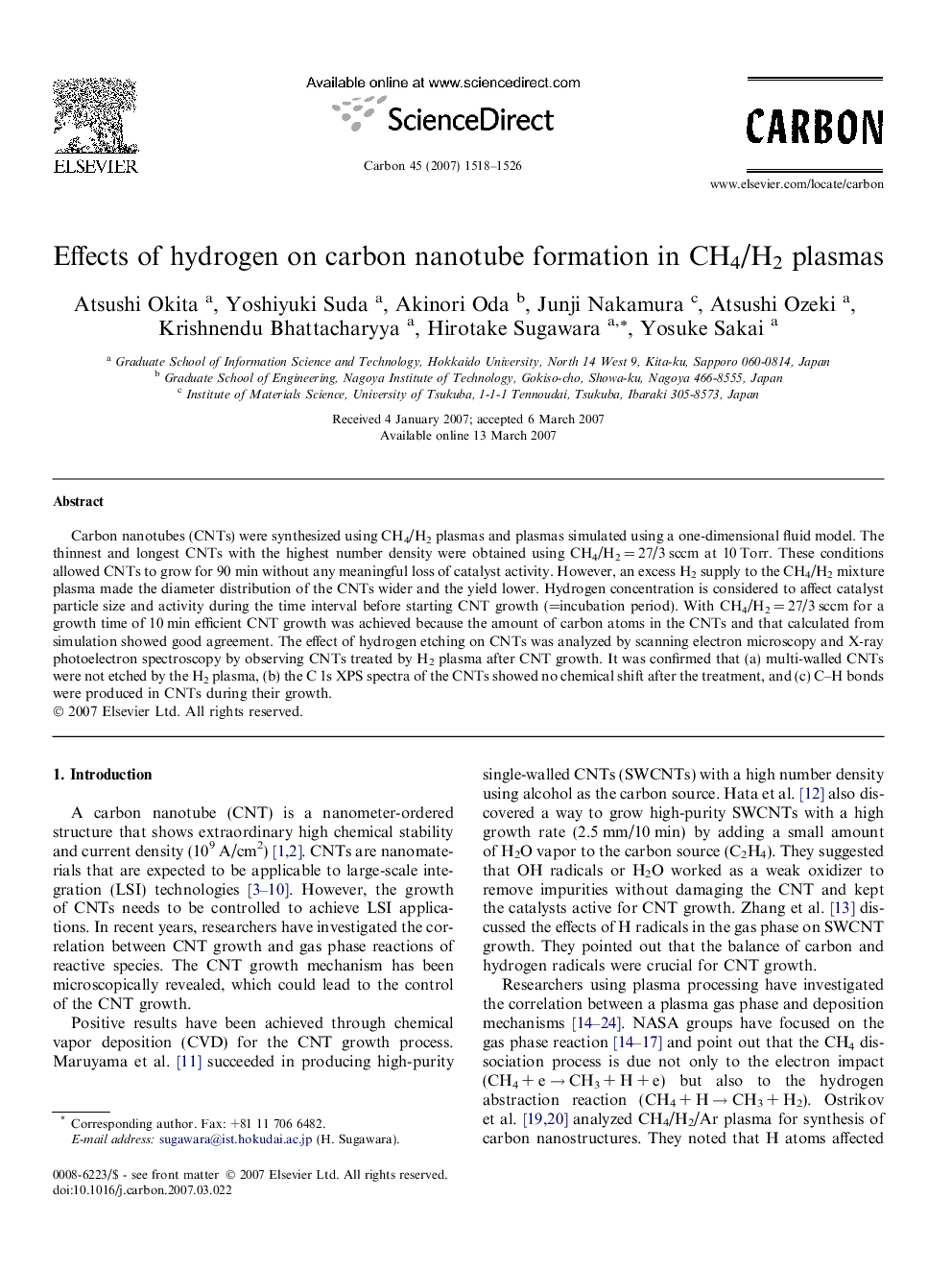| Article ID | Journal | Published Year | Pages | File Type |
|---|---|---|---|---|
| 1418891 | Carbon | 2007 | 9 Pages |
Carbon nanotubes (CNTs) were synthesized using CH4/H2 plasmas and plasmas simulated using a one-dimensional fluid model. The thinnest and longest CNTs with the highest number density were obtained using CH4/H2 = 27/3 sccm at 10 Torr. These conditions allowed CNTs to grow for 90 min without any meaningful loss of catalyst activity. However, an excess H2 supply to the CH4/H2 mixture plasma made the diameter distribution of the CNTs wider and the yield lower. Hydrogen concentration is considered to affect catalyst particle size and activity during the time interval before starting CNT growth (=incubation period). With CH4/H2 = 27/3 sccm for a growth time of 10 min efficient CNT growth was achieved because the amount of carbon atoms in the CNTs and that calculated from simulation showed good agreement. The effect of hydrogen etching on CNTs was analyzed by scanning electron microscopy and X-ray photoelectron spectroscopy by observing CNTs treated by H2 plasma after CNT growth. It was confirmed that (a) multi-walled CNTs were not etched by the H2 plasma, (b) the C 1s XPS spectra of the CNTs showed no chemical shift after the treatment, and (c) C–H bonds were produced in CNTs during their growth.
